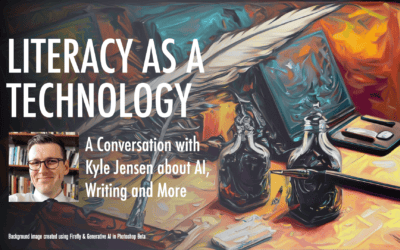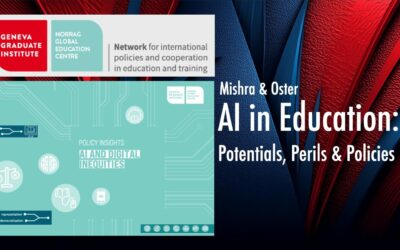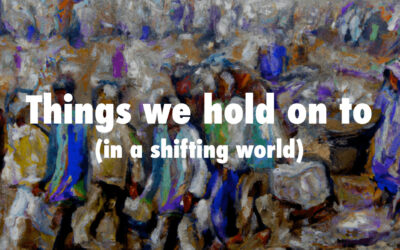I had posted earlier about a recent commercial that, though arguing at one level that technology can fundamentally change education, seemed to stick to the standard-lecture (albeit in different and cooler modes of transmission).
Just how little the discourse around educational technology has changed over time (while the technologies have changed drastically) was brought home to me recently through a book I borrowed by Patrick Dickson. Before I describe the book let me provide you one quote from that book.
The scope and nature of man’s learning have always been commissioned by the mediums of instruction which were available. The need for adapting himself to the changing conditions of his environment focused man’s attention upon bettering the tools by which he acquired learning…The modern school is forced to meet the demands of a rapidly changing civilization. Today the world of the learner is almost unbounded. He must acquire facts relating to a bewildering variety of places and things; he must acquire appreciations of far-reaching interrelationships. The curriculum and methods of teaching must undergo a continuous appraisal. New subject matter and new devices for instruction are being scrutinized for their potential contributions to the learning process.

Now this quote above could have come from any recent book on Educational Technology. In actuality, it comes from a 1933 book on using moving pictures in the classroom! The full citation is as follows:
Devereux, F.L. (1933). The educational talking picture. Chicago, IL: The University of Chicago Press.
The entire text can be accessed online here.
The technology they are talking about is the latest technological breakthrough of their time, namely Educational Talking Pictures. What is amazing is that though technologies changes so drastically, (imagine Educational talking pictures v.s. YouTube) the discourse hasn’t changed one bit.
Here are some more quotes (thanks to Kristen Kereluik for typing these out). I have replaced contemporary technologies for some of the older ones (with the older technologies in square parenthesis). See how they read.
The contribution of the Internet [sound picture] to education depends upon its effective utilization quite as much as upon the manner in which it is produced. The teacher who uses the Internet [shows a sound picture] simply to maintain the interest of his students, and who lets the matter rest with the projection, overlooks the values which accrue when the technology [film] functions in a unit of activity.
The proper kind of technology [sound-film] presentation opens up challenging roads to further learning; it generates an urge to acquire new understandings and new appreciations.
Technology [The educational talking picture] can achieve these potential contributions only when based upon adequate curriculum research. It must follow those principles of teaching method which are peculiarly appropriate to the medium, and it must employ the technical devices which will best embody these principles.
The Internet [educational talking picture] is not just a teaching device that might be compared with a piece of apparatus in the laboratory, the building blocks of the kindergarten, or the blackboards and other equipment of the classroom. The introduction of the use of the Internet [talking picture] into education may prove to be an event as epochal as the application of the principle of the wheel to transportation or the application of steam power to the industrial age. No development in education since the coming of the textbook as held such tremendous possibilities for increasing the effectiveness of teaching as the Internet [educational talking pictures]….An important advantage in the use of the Internet [talking pictures] in the educational program is the extent to which they unify subject matter.
Teachers must acquire a thorough understanding of this new medium of instruction, including the correct utilization techniques…Probably the most complex problem in connection with the use of any mechanical aid to instruction is the integration of the use of the aid with teaching method and the curriculum.
What all these quotes tell me is that we need a new discourse, a new way of talking about the relationship of technology to teaching, particularly the role of research in helping identify effective pedagogical techniques, and the creative, designerly role of the teacher. The TPACK framework is one part of the argument – but its extensions into teacher creativity, something that is increasingly becoming part of my thinking about this, is another.
Matt Koehler, Kristen Kereluik and I are working on some papers on these issues, so I am being brief here, but I can point to a previous blog post that may be worth reading.





0 Comments
Trackbacks/Pingbacks